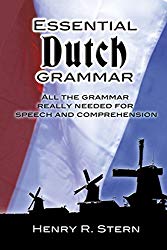What's the difference between de and het?
Short on time? ⌚
Both words mean "the". In Dutch, every noun is assigned either de or het, and it's usually random – but there are some rules for certain categories of noun, which can make remembering easier.
In English, we use "the" to refer to single and individual things, and "a" to refer to things of which there are multiple. These are called the definite article ("the") and indefinite article ("a" or "an").
In Dutch, however, there are two definite articles – de and het. Both mean "the".
For example, het meisje ("the girl") but de kat ("the cat").
The reason that two definite articles exist is because Dutch, like many languages, has something called grammatical gender. This means nouns are assigned a "gender" – either masculine/feminine (de) or neuter/common (het). This has very little to do with our everyday concept of "gender", it's simply a linguistic feature.
You don't need to concern yourself too much with the details, but you do need to know that all nouns in Dutch are assigned either de or het.
How do you know when to use de, and when to use het?
This is a problem all Dutch learners must face. Unfortunately, it's essentially random whether a noun is assigned de or het. However, there are some rules that apply to certain categories of words, or to words with specific suffixes and prefixes – you can use these rules to determine which article some nouns take.
Here are some rules for de and het in Dutch:
The following groups use de:
Plural nouns
- de katten ("the cats")
- de vrouwen ("the women")
- de slangen ("the snakes")
- de koekjes ("the cookies")
Words ending in -ing, -ij, -er, -aar, -heid, and -ie
- de moeilijkheid ("difficulty")
- de apartheid ("apartheid")
- de bakker ("the baker")
- de vriedin ("the girlfriend")
- de vergadering ("the meeting")
- de ambtenaar ("the civil servant")
Words referring to people and professions
- de bakker ("the baker")
- de politieagent ("the policeman")
- de zanger ("the singer")
- de vriend ("the friend")
- de man ("the man")
- de vrouw ("the woman")
Plants, trees, fruits & vegetables
- de eik ("the oak")
- de roos ("the rose")
- de appel ("the apple")
- de wortel ("the carrot")
Rivers and mountains
- de Grevelingen
- de Mount Everest
Numbers and letters
- de a ("the A")
- de vijf ("the five")
And the following groups of words use het:
Singular diminutive words
- het vrouwtje ("little woman")
- het mannetje ("little man")
- het droompje ("little dream")
Sports and games
- het voetbal ("football")
- het schaak ("chess")
- het tennis ("tennis")
Infinitive forms of verbs
(The ‘infinitive’ form of a verb simply refers to a verb's most basic form — the ‘root’ or ‘stem’ form of that verb. This is the way the verb will appear in a dictionary. In English, for example, the infinitive form of "running" is "to run".)
- het eten ("to eat")
- het lopen ("to walk")
- het spelen ("to play")
Words ending in -isme, -sel, -um and -ment
- het racisme ("the racism")
- het raadsel ("the puzzle")
- het album ("the album")
- het fundament ("the foundation")
Words with two syllables starting with be-, ge-, ver-, and ont-
- het beheer ("the manager")
- het geluid ("the sound")
- het verband ("the connection" or "the context")
- het onthaal ("the reception")
Cardinal directions (compass points)
- het noorden ("the north")
- het zuiden ("the sound")
- het oosten ("the east")
- het westen ("the west")
- het zuidwesten ("the southwest")
Names of languages and metals
- het Engels ("English")
- het Duits ("German")
- het koper ("the copper")
- het zilver ("the silver")
How do I remember which to use?
When learning a new noun in Dutch, you should try to learn it alongside its article. Instead of learning kat ("cat"), try to learn de kat. Over time, you'll begin to notice that a noun just "sounds right" with its appropriate article.
If you're an English speaker, for example, you probably don't stop to consider whether you should use a or an with a word, do you? It just "sounds right" to your ear. It's this sense of familiarity that you'll develop for articles in Dutch too, over time.
You can use the website Welk lidwoord? ("Which article?") to find out whether a specific Dutch noun takes de or het, if you're unsure.
Many leaners find it helpful to use flashcards to pair nouns with their article, testing themselves as they learn. You could also pick up a Dutch phrasebook and explore specific categories of nouns, practicing learning each word with its article.
As with all things, stick with it and you'll get the hang of it!
